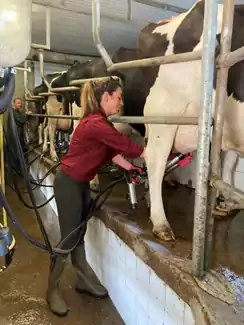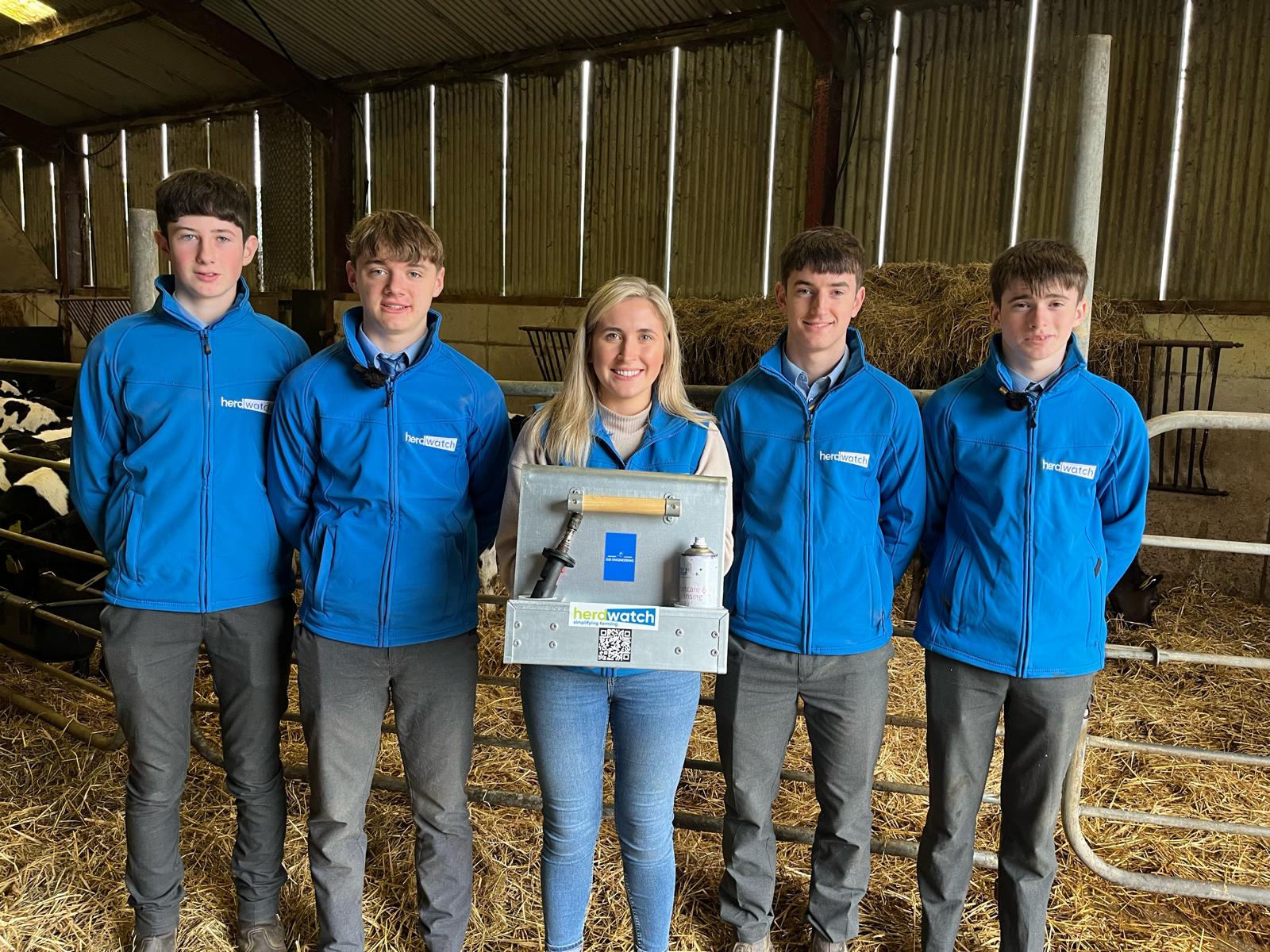Improving your Cow Performance with Herdwatch

2022 will see big changes for Dairy farmers
Mastitis remains one of the most biggest challenges for dairy farmers that can affect cow performance and production. Currently, the practice of blanket dry-cow therapy is the most common method used prevent mastitis. This is where intramammary (IM) antimicrobials (AMs) are given to all cows at dry-off in order to treat infected cows and prevent against infection on uninfected cows.
From January 2022, under the new Regulation (EU) 2019/6 on veterinary medicinal products, the blanket use of antibiotic dry cow therapy will be prohibited. The new legislation will take effect from January 28th, 2022 which means we will no longer be allowed to administer dry cow tubes to all cows in the herd by default (blanket dry cow therapy). This is part of a targeted global action plan to reduce the use on anti-biotics in food chains, which have been increasing the levels of anti-biotic resistance in humans.
Metaphylaxis (treating animals with an antibiotic in advance of an expected outbreak of disease) e.g. putting weanlings into a shed and treating them all, and prophylaxis (treating animals with an antibiotic to prevent a disease) will both be prohibited and may be prescribed only in exceptional circumstances such as diagnostics or veterinary advice but general antibiotic use on healthy animals will not be permitted.
The highest priority critically important antimicrobials (HP-CIAs) such as your 3rd and 4th generation cephalosporins and your fluoroquinolones will be restricted use from January 2022.
What is antimicrobial resistance (AMR) and why must we change how we use antibiotics?
Anti microbial resistance (AMR) is a real concern in both human & animal medicine. It occurs when micro-organisms that cause infections adapt and prevent an antimicrobial from working against it. As a result the antimicrobials used to treat infections are no longer effective, limiting the treatment options available and therefore making the most common infections more difficult to treat.
AMR related deaths are greater than 25,000 a year in the EU and the WHO is estimating that 10 million deaths will occur by the year 2050 as bacteria are able to mutate to become “Super Bugs”. AMR is here but we need to do everything as a society as a whole to stop it.
Selective dry cow therapy is the future of drying off
Mastitis is NOT caused by a deficiency of intramammary antibiotic! Hygiene is the main thing that causes mastitis and no antibiotic should be used to take over from poor hygiene. Dairy farmers can combat mastitis by using your data, keeping hygiene good and keeping your records in check so you can pick out the cows the cows that you don’t need to use antibiotics in.
Selective dry cow therapy (SDCT), as opposed to blanket dry cow therapy (BDCT), employs a specific strategy to avoid treating every cow with antibiotics at dry off.
On a recent Herdwatch webinar, Hazell Mullins, Clinical Director at Highfield Veterinary Group was on hand to outline how to successfully implement Selective Dry Cow Therapy on your farm as well as talking about the the benefits of Milk Recording.
Key criteria for success of SDCT
- Identifying the infected cow at point of dry off.
- Avoid infection during the drying off process.
- Keeping the cow uninfected throughout the dry period.
- Keeping the cow uninfected at calving.
Key = Hygiene & Hygiene + Hygiene
Example Criteria for SDCT
Herd Selection 
- Bulk Tank SCC consistently <200,000 cells/ml
- Milk recording: ideally monthly
- Records of clinical cases and outcomes
- < 2% clinical case rate in the last 3 months of lactation
Cow selection
- SCC consistently <200,000 – last 4 recordings
- No clinical case throughout the lactation (important to record all cases as sometimes will not be reflected in the milk recordings)
- No skin lesions
Milk Recording & Cow Performance
Milk Recording is the key to achieving successful safer Selective Dry Cow Therapy. It is essential to record one month before dry off or 60 days before the start of calving to assess the SCC of the herd, which allows you to monitor cure rates over the dry period.
Therapy. It is essential to record one month before dry off or 60 days before the start of calving to assess the SCC of the herd, which allows you to monitor cure rates over the dry period.
Working with your Vet or advisor, you should be aiming for > 85% cure rate and Dry period new infection rates of < 10%. Milk recording should be carried out least 4 times a year – the more you do, the more information you have and in turn the safer the SDCT is for your cows.
Along with SCC management, improving udder health and reducing the usage of antibiotics, milk recording provides excellent detail on cow performance that can be easily accessed and interpreted within Herwdatch.
Interpretation of milk recording data and the information that it provides will have a critical role to play in the development of breeding plans on farm in the future. The number of herds milk recording in Ireland is low relative to our international counterparts and needs to increase significantly. Its importance will become even more critical as blanket dry cow therapy is phased out.
Using the milk recording and performance dashboards in Herdwatch you will be able to easily select best cows for dairy replacements improving EBI overall on the farm, selecting culls and making sure problem cows are not being bred and in turn reducing SCC. Selective breeding will increase your EBI, solids, milk reduction, fertility as well as having a SDCT process. Combining and analysing milk recording information in Herdwatch can easily be done and help to make better on-farm decisions.
Hazell Mullins Top Tips for SDCT
- Eat breakfast – Don’t be hangry!
- Be organised – lay out everything on a table or other side of herring bone
- Spotless parlour before starting
- Gloves – if possible new gloves for each SDCT cow
- Teat score – make sure surface of the teat is smooth
- Bucket of cotton pads in surgical spirts or else remove wipes from packets and place in surgical spirit
- Do not place sealers in warm water to soften – Pseudomonas risk
- Stand in clean yard for 30 mins
- Remember – treat your cows like surgical patients – embrace your inner surgeon!
Dry Off/SDCT Management in Herdwatch
By using Herdwatch, you will be able to access all of the information needed to select cows to be dried off, within the Dry Off Management feature in Herdwatch which gives you a detailed dashboard which includes cows in herd, average herd SCC, cows suitable for SDCT, cows to dry, cows dried, milk record and more.
A simplified list of what cows Herdwatch suitable for SDCT (always check with your Vet) as below:
-2.png)
These lists are all customisable with the use of filters, so you can change highest SCC threshold to 50,000 and latest SCC threshold to 50,000 and expected calving date to 15 of February 2022 to just have a list of cows with this criteria.
Herdwatch is fully compliant with all quality assurance standards in Ireland & the UK and allows farmers to record all remedy usage, register calves, cattle movements, breeding records, map your farm and more on a simple to use app.
You too can join Hazell and over 15,000 other happy farmers saving time on farm paperwork and managing their farms more efficiently by downloading the Herdwatch app today.




